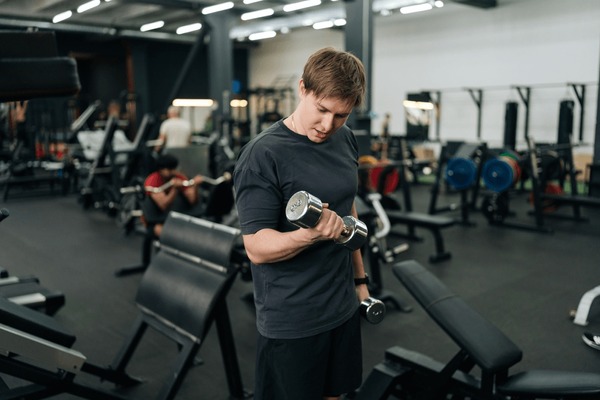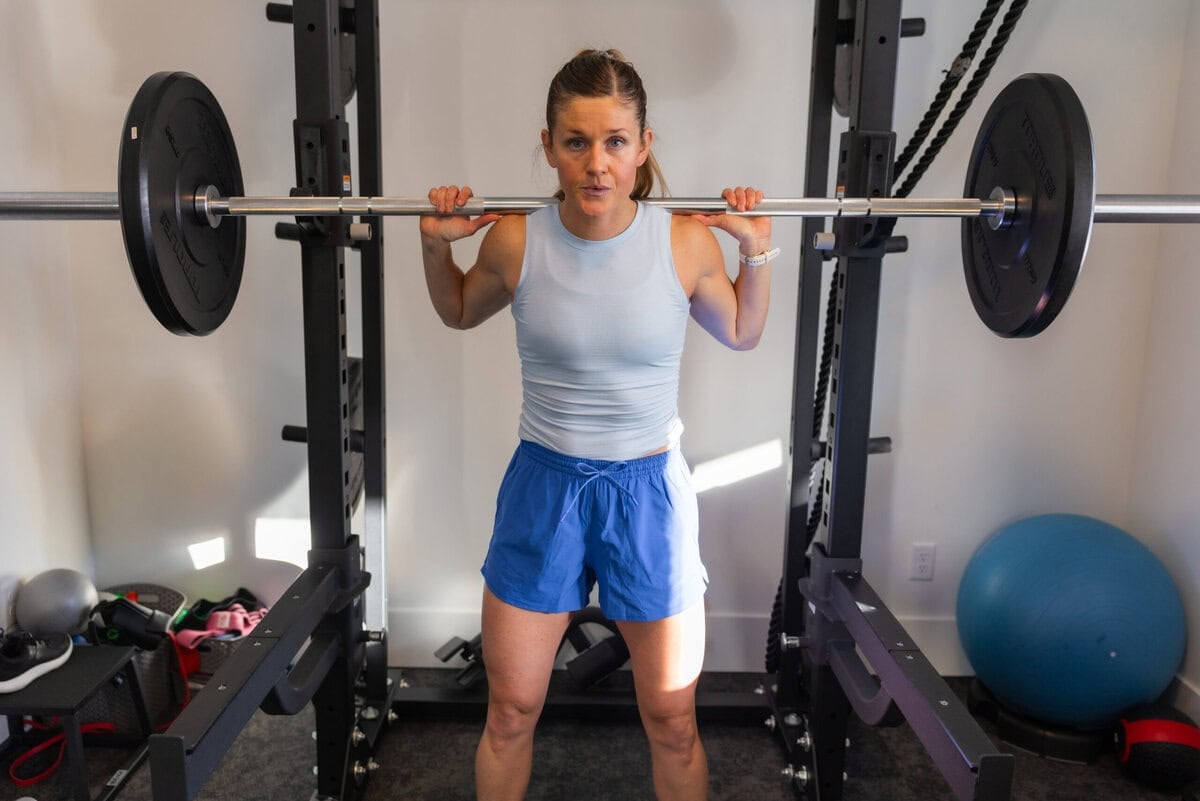Resistance Band Workouts for Full-Body Strength: Your Comprehensive Guide to Power and Flexibility Anywhere
1. An Engaging Introduction: Strength in Your Hands
In the fast-paced world of fitness, where the need for flexible and effective training solutions is growing, Resistance Bands stand out as a revolutionary tool that has changed the concept of building muscular strength. Strength training has long been associated with heavy weights and bulky machines in gyms, but these simple elastic bands have proven their ability to offer an equivalent, and in some aspects, more beneficial challenge, without the need to leave home or the office.
The importance of strength training is not limited to muscle building; it also extends to improving bone density, boosting metabolism, and preventing chronic injuries. However, many people face obstacles such as lack of time, the high cost of gym memberships, or even difficulty traveling. This is where resistance bands come in as an ideal solution that combines effectiveness, flexibility, and economy.
1.1. The Resistance Band Revolution: Why Are They the Optimal Choice?
Resistance bands are no longer just an auxiliary tool in physical therapy sessions; they have become an essential component in professional training programs. Their use dates back decades, initially for rehabilitation purposes, but fitness trainers quickly realized their immense potential in providing variable and continuous resistance that perfectly mimics the action of free weights.
In this detailed article, we will dive deep into the world of resistance band exercises. We will explain their types, how they work, and provide you with a comprehensive and detailed training program to strengthen your entire body. Our promise to you is that you will leave this article with the knowledge and practical steps necessary to start your journey toward a stronger, more flexible body, relying on this small yet powerful tool.
2. Understanding the Basics: What Are Resistance Bands?
Resistance bands are flexible strips made of latex or other elastic materials, designed to provide resistance when stretched. Their strength lies in their simplicity and their ability to provide variable resistance, meaning the resistance increases the more the band is stretched. This stimulates the muscles in a unique way, different from traditional weights.
2.1. Types of Resistance Bands and Their Uses
Resistance bands come in different shapes and sizes, and each type is designed for a specific purpose:
| Type | Description | Common Uses |
|---|---|---|
| :--- | :--- | :--- |
| <strong>Loop Bands</strong> | Closed loops, short and thick. | Lower body exercises (glutes, thighs), and warm-up exercises. |
| <strong>Tube Bands with Handles</strong> | Long bands with plastic or foam handles. | Upper body exercises (chest, back, arms), simulating cable machines. |
| <strong>Flat Therapy Bands</strong> | Long, flat strips, without handles. | Physical therapy, stretching exercises, and light strength training. |
| <strong>Figure 8 Bands</strong> | Short bands shaped like the number 8, with handles. | Arm and shoulder exercises, and specific upper body exercises. |
2.2. How Do Resistance Bands Work?
The fundamental principle behind resistance bands is Progressive Resistance. Unlike free weights, which provide constant resistance (a fixed weight), the band provides resistance that gradually increases the more you stretch it. This means the muscle works harder at the end of the movement (the point of maximum contraction), which enhances the activation of muscle fibers.
Resistance bands also require the stabilizer muscles to work harder to maintain balance and control the movement, leading to better functional strength. The resistance level is usually indicated by the color of the band, starting from light (yellow or red) and progressing to very heavy (black or gold).
3. The Golden Advantages of Full-Body Resistance Band Workouts
Resistance bands surpass traditional weights in several aspects, making them an indispensable tool in any training program:
3.1. Health and Physical Benefits
Building Muscular Strength and Endurance: Studies have shown that training with resistance bands is as effective as free weight training in increasing muscular strength and size, especially when used correctly and taken to muscle failure [1]. Improving Joint Stability: Because the band provides resistance from different angles, it forces the joints to work harder to maintain stability, which strengthens the muscles surrounding the joints and reduces the risk of injuries. Flexibility and Portability: A complete set of resistance bands can be packed into a small bag, allowing you to train anywhere: at home, in a hotel while traveling, or even in the park. Activating Stabilizer Muscles: Exercises with bands require greater control over movement, which activates small muscles that are often neglected when using gym machines.
3.2. Suitability for All Levels
Resistance bands are ideal for everyone, from beginners learning the basics of movement to professional athletes seeking to add a new challenge or focus on speed (Power Training). They are also an essential tool in physical rehabilitation programs, as they provide gentle, easily controllable resistance without straining the joints.
4. A Comprehensive Full-Body Training Program Using Resistance Bands
To achieve maximum benefit, your training program should cover all major muscle groups. Here is a set of essential exercises that target the entire body:
4.1. Upper Body Exercises
| Target Muscle | Exercise | How to Perform (Summary) |
|---|---|---|
| :--- | :--- | :--- |
| <strong>Chest</strong> | <strong>Chest Press</strong> | Anchor the band behind your back, hold the ends of the handles, and push your hands forward as you would in a push-up. |
| <strong>Back</strong> | <strong>Band Rows</strong> | Anchor the band around a fixed point (or under your feet), and pull the handles toward you, squeezing your shoulder blades together. |
| <strong>Shoulders</strong> | <strong>Lateral Raises</strong> | Stand on the band, hold the ends, raise your arms out to the side until shoulder level, slowly and with control. |
| <strong>Arms</strong> | <strong>Bicep Curls</strong> | Stand on the band, hold the ends, and curl your arms toward your shoulders. |
| <strong>Arms</strong> | <strong>Triceps Extensions</strong> | Anchor the band under one foot, raise the handle over your head, and extend your arm upwards. |
4.2. Lower Body Exercises
Band Squats: Stand on the band (tube band), place the handles on your shoulders, and perform a squat while keeping your back straight. The increasing resistance will make the top part of the movement more challenging. Glute Bridge: Lie on your back, place a loop band above your knees, lift your hips up while pushing your knees outward to resist the band's tension. This heavily targets the glute muscles. Lateral Walks: Place a loop band around your ankles or below your knees, assume a partial squat position, and take short steps to the side. This exercise is excellent for strengthening the side glute muscles (Glute Medius). Romanian Deadlifts: Stand on the band, hold the ends, keep your legs straight with a slight bend in the knees, and lower your torso forward while maintaining a straight back. This targets the hamstrings and lower back.
4.3. Core Exercises
Russian Twist: Sit on the floor, anchor the band around your feet, hold the ends, and twist from side to side. Resistance Band Plank: Place a loop band around your ankles, assume a plank position, and alternate lifting one leg then the other.
5. Practical Tips to Maximize Your Workout Effectiveness
To transform resistance bands from a mere tool into a real catalyst for muscle growth, you must follow some basic principles:
5.1. Mastering Technique and Avoiding Common Mistakes
Controlling the Eccentric Phase: Do not let the band quickly pull you back to the starting position. The return phase (eccentric movement) should be slow and controlled (it may take 3-4 seconds). This increases tension on the muscle and promotes its growth. Maintaining Constant Tension: Ensure the band is slightly taut even in the starting position. If the band is slack, you lose resistance in the first part of the movement. Avoiding Overstretching: Do not stretch the band to the point where you feel joint pain or lose control of the movement. The challenge should be in the target muscle, not the joint. Inspecting the Band: Always check the band for any cracks or tears before use to avoid injuries.
5.2. How to Design Your Own Routine
To achieve maximum benefit, the principle of Progressive Overload must be applied, which is the principle that stimulates muscles to grow.
Sets and Repetitions: Start with 3 sets for each exercise, and perform 10-15 repetitions. If you can easily perform 15 repetitions, it is time to increase the resistance. Progressive Overload: You can increase the load in one of the following ways: 1. Use a band with higher resistance (change the color). 2. Shorten the band: Stand on a smaller area of the band to increase the initial tension. 3. Increase the number of repetitions or sets. 4. Slow down the movement: Focus on the eccentric movement as mentioned.
- Importance of Warm-up and Cool-down: Start with 5-10 minutes of light cardio and dynamic warm-up exercises, and conclude with 5-10 minutes of static stretching.
6. Suggested Weekly Training Program Schedule
This schedule is an example of a comprehensive training program that can be performed at home or anywhere, focusing on working the entire body three times a week:
| Day | Target Muscle Group | Suggested Exercises (3 sets × 12-15 reps) |
|---|---|---|
| :--- | :--- | :--- |
| <strong>Day 1</strong> | <strong>Full Body (Strength)</strong> | Chest Press, Band Rows, Squats, Romanian Deadlifts, Triceps Extensions. |
| <strong>Day 2</strong> | <strong>Rest/Light Cardio</strong> | Brisk walking, yoga, or stretching exercises. |
| <strong>Day 3</strong> | <strong>Full Body (Endurance)</strong> | Lateral Raises for shoulders, Bicep Curls, Lateral Walks, Glute Bridge, Russian Twist. |
| <strong>Day 4</strong> | <strong>Rest</strong> | Complete rest. |
| <strong>Day 5</strong> | <strong>Full Body (Mixed)</strong> | Incline Chest Press (using a door anchor), Single-Arm Band Row, Single-Leg Squat, Resistance Band Plank. |
| <strong>Day 6</strong> | <strong>Rest/Recreational Activity</strong> | Swimming, cycling. |
| <strong>Day 7</strong> | <strong>Rest</strong> | Complete rest. |
7. Concluding Summary: Invest in Your Health
Resistance bands have proven to be more than just a passing trend in the fitness world; they are an effective, practical, and safe training tool that allows you to build real muscular strength and improve your overall body flexibility. They provide variable resistance that stimulates muscles in a unique way and reduces stress on the joints compared to heavy weights.
Strength does not necessarily require an expensive gym or complex equipment. All you need are a few elastic bands, a little commitment, and the correct knowledge we have provided in this guide. Start today by applying this training program, and invest in your health and functional strength. Remember that consistency is the key to success, and resistance bands make consistency easy and possible anytime, anywhere.
--- References:
[1] Comparison of Resistance Band and Free Weight Training on Strength and Muscle Mass. (Scientific study on the effectiveness of resistance bands). [2] The Role of Resistance Bands in Rehabilitation and Injury Prevention. (Article on the role of bands in rehabilitation). [3] Principles of Progressive Overload in Strength Training. (Article on the principle of progressive overload).



